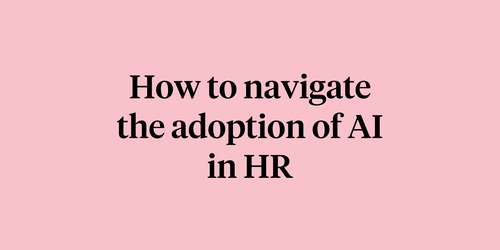
What we’ve learned from our COVID-19 response template

The pandemic is putting an unprecedented amount of pressure on employees and employers alike. One study found that one in four U.S. employees are experiencing burnout as a result of COVID-19.
This makes it a critical time for organizations to keep a finger on the pulse of the mental health, well-being, engagement, and productivity of their workforce. To support these efforts, we launched the COVID-19 response template in March 2020. Our goal was to help companies survey their employees and understand how the rapidly changing work environment has impacted them.
Since then, we’ve sourced data from 100,000 employees across 200 organizations around the world. Below we share the key findings with you.
The big picture
The overall favorability scores for this survey are higher than we would see for a typical engagement survey. There’s a reason behind this: we intentionally created questions that focus on making sure employees’ most basic needs are being met within the context of the pandemic.
If you look at this from the perspective of Maslow’s hierarchy of needs, this includes addressing issues related to physiological needs, safety, and belonging. However, we didn’t create any questions around the higher order of needs such as self-esteem or self-actualization. Given everything that’s going on with COVID-19, we didn’t feel it would be sensitive to ask employees at this moment in time. Not to mention it wouldn’t be within scope for most organizations to influence right now.
It’s also important to note that the participation rate for this survey is lower compared to our other surveys, with the median rate being 78% (which is almost 10 points lower than our typical engagement surveys). This is unsurprising given that employees have a lot on their plates and the emergency response survey is open for a shorter period of time in order to collect feedback quickly.
Now let’s dive into some specific trends we noticed in the data with regard to organizational responsiveness, leadership and engagement, and remote work.
Organizational responsiveness
Organizational responsiveness refers to a company’s ability to respond to its external environment in an effective way. Our data found that, regardless of company size, employees show a high level of confidence in their organization’s response to the pandemic.
Employees feel confident in the response of their employers
On average, 93% of employees surveyed are confident in their organizations’ response to COVID-19. What’s interesting to note is that companies with 1,000 to 5,000 employees scored the highest on the question “I have confidence in my company’s response to the COVID-19 pandemic.” This demonstrates that large corporations have the ability to make decisions in an agile and efficient way - just as smaller companies or startups do.
Leadership and engagement
It’s clear that the response of leaders in the face of COVID-19 has a significant impact on the experience and sentiment of employees. More specifically, our data found a direct relationship between more engaged employees and companies demonstrating strong leadership traits.
Companies are heading in the right direction
Employees are reacting favorably to the actions organizations are taking in relation to COVID-19, whether that’s introducing new policies around remote work or enacting hiring freezes. On average, more than 91% of all employees surveyed believe their company made the right changes in response to COVID-19.
Responsive leadership leads to more highly engaged employees
There’s a strong correlation between leaders who decisively implemented a plan of action in response to COVID-19 and overall employee engagement. Specifically, our data found that organizations who scored the highest on the question “My company is making sufficient adjustments to the COVID-19 Pandemic” also had the highest response rate with more than 75% of employees responding to the survey.
Healthcare workers need more from leadership
Unfortunately, healthcare workers - compared to employees in other industries - are the least likely to view their leadership as accessible and visible during the COVID-19 pandemic. On average, 84% believe their leadership is appropriately visible and accessible during the COVID-19 pandemic, which is the lowest score across all industries.
Remote work
The transition to remote work has been top-of-mind for employers. Companies had to move quickly to ensure their employees could access the work systems and technology they needed to do their jobs from home. Leaders also had to find ways to build new processes around communication and teleworking that previously didn’t exist for many organizations. Did those efforts pay off? The general consensus is ‘yes’ across companies of all sizes and industries.
The transition to remote work is going well
Thankfully, the widespread adoption of tools like Slack, Zoom, and Google Docs made the rapid shift to a distributed working model possible. This, paired with the quick response by organizations, led to more than 90% of all employees surveyed believing they’re adapting well to remote work.
The same goes for healthcare workers
Healthcare workers are having a similar experience with the transition to remote work, with 95% surveyed believing they’re adapting well. In fact, healthcare workers scored the highest in terms of adaptability to remote work among all industries. This can perhaps be attributed to the fact that telehealth has been around for several years now and is only expected to grow to $55.6 billion by 2025.
While the data from the first iteration of the COVID-19 response template will continue to evolve, we feel optimistic about the fact that organizations are starting off on the right foot and rapidly adapting to the changing demands of the workplace.
Our hope is that this data gives you additional context for where your own organization stands in terms of its response to COVID-19. While we encourage companies to continue surveying their workforce to understand areas for improvement as well as progress, it’s even more important for leaders to use this valuable data to take action.


